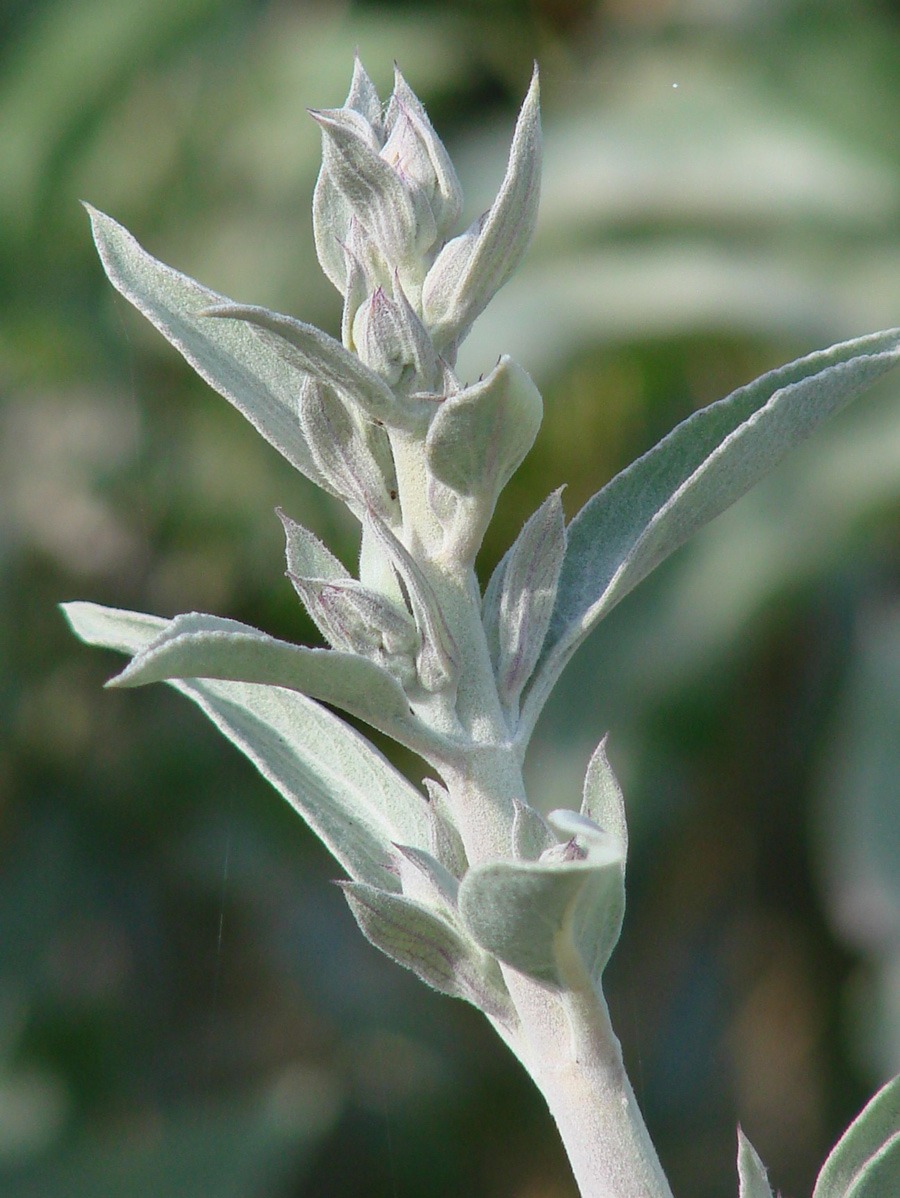(Compact Sacred White Sage) Salvia apiana var. compacta is significantly shorter than the common species of Sacred White Sage and somewhat more cold tolerant. Its smaller leaves and compact form make it a tidier choice for home gardens with the right kind of growing conditions.
Like its full-size relative, Compact Sacred White Sage is a magnet for bees and hummingbirds. We’ve heard that quail and native birds love its seeds.
Stiff and almost fleshy, the leaves of S. apiana var. compacta are tight rosettes of brilliant, silvery green that is almost white. The flower spikes rise above the foliage, with hundreds of small white-to-lavender flowers.
All forms of S. apiana are an important herb to indigenous Californians, who use it in smudge bundles for blessing ceremonies. Historically, they also used it for basket weaving, food, and medicine. We sometimes burn a leaf in our home to sweeten and purify the air.
Compact Sacred White Sage has a broader range than the common form of S. apiana. The compact form is adaptable to the greater moisture of coastal Northern California as well as its drier Southern California homelands, which range roughly from Santa Barbara to Northern Baja, Mexico.
All types of S. apiana grow slowly and are difficult to cultivate outside their native range where they usually grow on rocky south slopes. They require good drainage and full sun as well as a Mediterranean-style, dry-summer/wet-winter climate. Little watering is necessary once these plants get established.
Sacred White Sage is one of the most important sources of pollen and nectar for pollinators along Southern California's coast and in its mountains and valleys. This is a powerful species, and the compact form is particularly beautiful.






